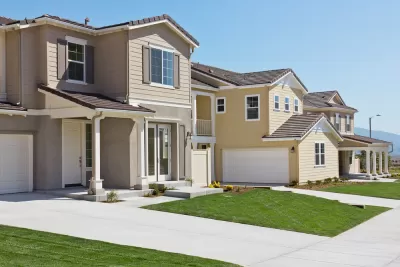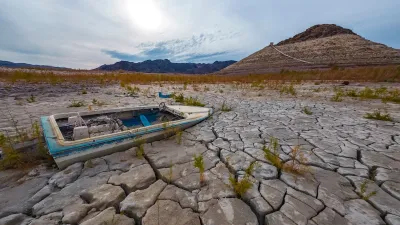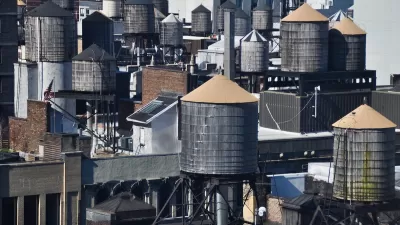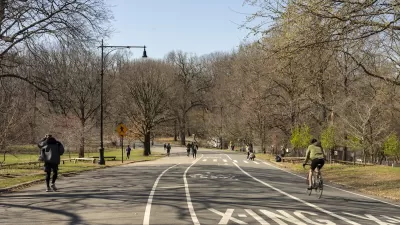Brown lawns may be less aesthetically pleasing than synthetic lawns, but are they safer?

California Governor Jerry Brown has called for 50 million square feet of lawns in the state to be removed; water districts across the state are offering rebates for lawn removal; and cities across the thirsty state impose fines on residents who water their lawns too often.
Thus it is that the state's capital is wrestling with the merits of a 30-year-old ban on artificial turf in front yards. According to Joy Patterson, principal planner for the city's Planning and Design Commission, the origins of the rule stem from aesthetic concerns. She explains that the turf of 1984 was used primarily for commercial applications and golf courses, but modern-day turf has evolved to look more like real grass.
"A review by Planning Commission staff, at the request of Councilman Jeff Harris, found artificial turf to be drought tolerant, with excellent built-in drainage and no irrigation requirements," reports Brenna Lyles for the Sacramento Bee.
But residents and Planning officials have environmental and safety concerns about the materials used to manufacture such life-like grass. Among other things, writes Lyles, residents "have questioned the safety of the ground-up, recycled tires that make up the tiny ‘crumb rubber’ pellets that are intended to give the surface more bounce and mimic dirt."
Councilwoman Angelique Ashby is not on board. "There's probably no way I would support it, ever. But, I would at least encourage my colleagues to consider how are we going to do enforcement so that we make sure that it's high quality, and that it doesn't have toxic runoff and that it is recycled appropriately if we're gonna use it, and that it is installed appropriately. How would we properly monitor those things?"
FULL STORY: Sacramento planning commission to consider allowing artificial turf in front yards

Americans May Be Stuck — But Why?
Americans are moving a lot less than they once did, and that is a problem. While Yoni Applebaum, in his highly-publicized article Stuck, gets the reasons badly wrong, it's still important to ask: why are we moving so much less than before?

Using Old Oil and Gas Wells for Green Energy Storage
Penn State researchers have found that repurposing abandoned oil and gas wells for geothermal-assisted compressed-air energy storage can boost efficiency, reduce environmental risks, and support clean energy and job transitions.

Placekeeping: Setting a New Precedent for City Planners
How a preservation-based approach to redevelopment and urban design can prevent displacement and honor legacy communities.

San Francisco’s Muni Ridership Grew in 2024
The system saw its highest ridership since before the Covid-19 pandemic, but faces a severe budget shortage in the coming year.

Colorado Lawmakers Move to Protect BRT Funding
In the face of potential federal funding cuts, CDOT leaders reasserted their commitment to planned bus rapid transit projects.

Safe Streets Funding in Jeopardy
The Trump administration is specifically targeting bike infrastructure and other road safety projects in its funding cuts.
Urban Design for Planners 1: Software Tools
This six-course series explores essential urban design concepts using open source software and equips planners with the tools they need to participate fully in the urban design process.
Planning for Universal Design
Learn the tools for implementing Universal Design in planning regulations.
Heyer Gruel & Associates PA
City of Moreno Valley
Institute for Housing and Urban Development Studies (IHS)
City of Grandview
Harvard GSD Executive Education
Salt Lake City
NYU Wagner Graduate School of Public Service
City of Cambridge, Maryland





























